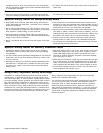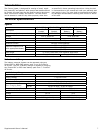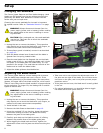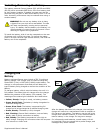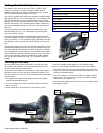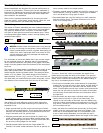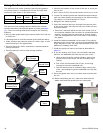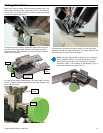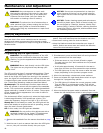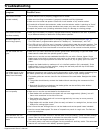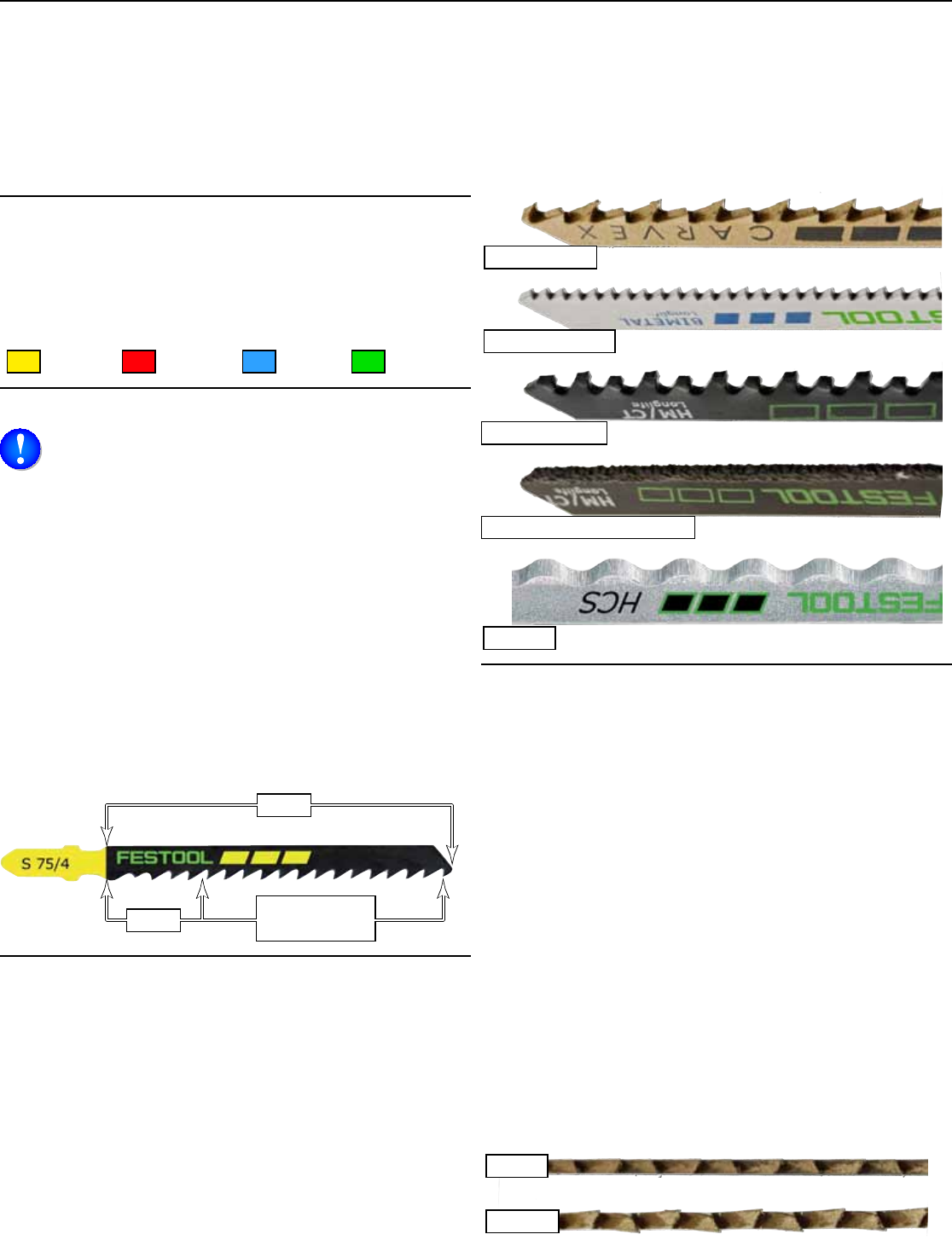
14 Carvex PS420 Series
Sawblade Selection
Festool sawblades are designed for optimal performance in
a variety of applications. Choosing the correct sawblade is
important for obtaining the best cuts and optimal blade life.
There are several factors that determine which blades are
best suited for the operation.
Some of the important parameters for choosing the best
blade are length, tooth shape, tooth spacing, tooth set, and
type of metal used for the blade body and teeth.
Blade Usage
The shank of Festool sawblades are color coded according to
their general usage intention. These colors are listed below.
The specialty blades are an exception in that each blade
will have its own special purpose and material type. These
include carbide tipped blades, ceramic cutting blades, and
serrated foam blades.
Wood Plastic
Metal
Specialty
Blade Length
NOTICE: Always use a saw blade that is long enough
to fully cut through the workpiece. Never attempt to
make a partial-depth cut with a jigsaw. Attempting to
make a cut with a saw blade that is too short to fully
cut the workpiece will likely damage the blade and
possibly the saw itself.
It is important to use a saw blade that is the correct length
for the material being cut. Because part of the sawblade
never extends below the sole plate of the jigsaw, the blade
length must be greater than the thickness of the workpiece
to be cut.
The length of a jigsaw blade is specied by the length of the
body that contains teeth, but does not include the upper
shank that ts inside the blade holder. The example below
shows a 75 mm blade. The usable length of this blade is
approximately 54 mm (2⅛"), which is 75 mm minus the 19
mm that does not extend below the saw’s sole plate, minus
the distance of the lowest tooth from the tip of the blade.
Usable Length
Approx. 54 mm
75mm
19mm
Tooth Type
Saw blades will have different types of teeth depending
on the purpose of the blade and the type of material it is
expected to cut.
► Angle ground teeth are the most common type of teeth
for wood cutting applications. These teeth have sharpened
sides as well as sharp points to provide effective side cut-
ting of the teeth, and not just the tips.
► Straight ground teeth are more typical for plastic and
metal cutting blades, but some wood cutting blades may
also have straight ground teeth. The tips of the teeth are
the primary cutting edges for the blade.
► Carbide tipped blades provide for longer blade life.
Carbide is a harder metal that does not dull as quickly as
other metals used for the blade bodies.
► Tungsten carbide abrasive blades are used for cutting very
hard materials, such as ceramics. These types of blades
cut in an abrasive or ling type of action.
► Serrated blades are used for cutting very soft materials,
such as building foam. The blade functions much like a
knife in its cutting action.
Serrated
Tungsten Carbide Abrasive
Carbide Tipped
Straight Ground
Angle Ground
Tooth Set
The term “tooth Set” refers to whether the teeth of the
blade extend out past the body of the blade. This permits
the kerf of the blade’s cut to be wider than the body of the
blade, which reduces the likelihood of the blade binding in
the cut or overheating due to friction.
► Conical ground blades (also called tapered or trapezoidal
blades) do not have any set in their teeth, but the body of
the blade is ground to be narrower that the width of the
teeth. These blades provide very smooth cuts because the
teeth are not set side-to-side from the body of the blade,
but the body of the blade still has some clearance within
the saw kerf.
► Side Set teeth are when each individual tooth is alter-
nately bent to the left or right of the blade body. This
results in the kerf width to be wider than the blade body,
and also makes these blades more aggressive in their cut-
ting action. However, the wider the tooth set, the rougher
the cut surface will be.
► Wavy set teeth are used almost exclusively for ne-tooth
blades, such as metal cutting or ne scroll blades. The
teeth are so close together that it is not possible to put
a set on each tooth separately, so the teeth are set in
groups with a waving pattern down the length of the body.
No Set
Side Set



